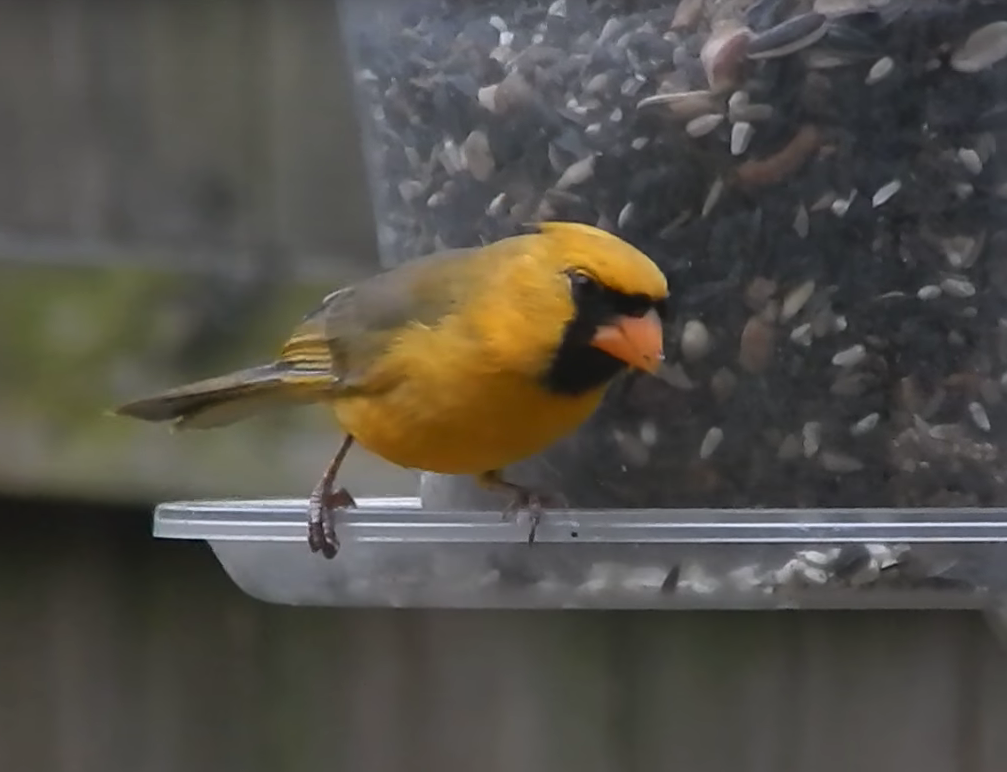

Ground-foraging Yellow Cardinals in savannahs foraged exclusively in grass patches with short grass of 3˗12 cm height. Tree density, shrub cover and height of herbaceous layer were lower in savannahs than in open woodlands. Yellow Cardinals were again only detected in savannahs. In a second set of surveys, transects were surveyed at sites with known presence of Yellow Cardinals and were placed within savannahs as well as nearby in open forests of only slightly different physiognomy. Yellow Cardinals were only detected in savannahs. In Entre Ríos province, Argentina, we first sampled Yellow Cardinal presence in four environments: Espinal savannahs, Espinal open woodlands, riparian woodlands, and agricultural fields. In north-east Argentina it is known to be associated with the Espinal ecoregion, but no information was available on habitat selection within this ecoregion. The endangered Yellow Cardinal Gubernatrix cristata is under pressure from habitat loss and from capturing for the cage bird trade. With this work we contributed to improve the knowledge on the breeding behavior of this poorly know group of understory insectivorous birds. The nest architecture, the color of the eggs, and the behaviors presented by this gnateater were similar to those described for other Conopophaga. On a number of occasions, members of the breeding pair were observed moving away from the nest as it was approached by observers, while engaging in broken-wing display. During the breeding season, the adult pair emitted alarm calls constantly when observers were in the vicinity of the nest. The growth curves are sigmoidal and all the coefficients of determination are at least 0.96, with the body length having the highest value (R 2 = 0.98).

Yellow cardinal full#
Hatchlings are completely naked and weigh 3.1 ± 0.2 g (N = 7), and when they abandon the nest, they have yet to reach full adult size, with the total length being 65.4% of that of the adult, the wing, 65.4%, the head, 73.9%, the culmen, 74.2%, the body mass, 73.3%, and the tarsus, 89.0% that of the adult.

The eggs were beige in color, with irregular brown mottling only at the rounded end of the egg, which had a mean length of 21.3 ± 0.8 mm, width of 17.2 ± 0.8 mm, and mass of 3.1 ± 0.1 g (N = 23). The nests were 23.1 ± 3.9 cm in length and 14.1 ± 1.6 cm in width (N = 21). The cup-shaped nests were supported by small branches and were constructed at a mean height of 40.6 ± 16.1 cm (N = 21) above the ground. A total of 22 nests were found over the course of three breeding seasons. The nests were identified during active searches conducted between June, 2018 and March, 2021. In the present study, we describe the reproductive biology of the species and the growth pattern of the nestlings, based on observations conducted in remnants of the Cerrado savanna in eastern Maranhão state, in Brazil.

WIAT CBS 42 then produced a delightful story on Wednesday morning about the Yellow Cardinal hanging out near the new Thompson High School.The Hooded Gnateater Conopophaga roberti Hellmayr, 1905 is an insectivorous understory passeriform with discrete behavior, whose reproductive attributes are poorly-known. As of this morning, February 23rd, Black’s post on the Rare Bird Alert has been shared nearly 9,527 times.īirmingham Audubon helped get the ball rolling by picking up on the story and re-posting the Alabama Rare Bird Alert post on February 19th.
Yellow cardinal professional#
He is selling professional prints of the beautiful photo he made public). Once Black shared the image, the story went gone viral (Consider visiting Jeremy Black’s Facebook page. To see updates on this cardinal please check out” According to a biologist from Auburn University, this mutation is so rare that only one is seen each year in the United States. This yellow cardinal displays a rare mutation that causes the metabolic process to produce a different type of pigment than the typical red coloration. “This morning Charlie Stephenson provided me with the opportunity to photograph the most captivating cardinal in Alabaster, Alabama.


 0 kommentar(er)
0 kommentar(er)
